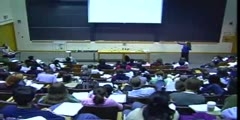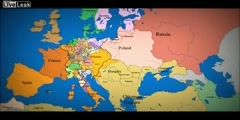Lec 9 - Demographic Transition in Europe
"Lec 9 - Demographic Transition in Europe" Global Problems of Population Growth (MCDB 150) Prior to the Demographic Transition, fertility in northwestern Europe was controlled by limiting marriage. Marriage was regulated by landowners and the churches, and was not allowed unless a man had accumulated the resources necessary to support a family. Long periods of being landless, a servant, or an apprentice, precluded marriage. Once married, there was no control of fertility. But, only about half of adults were married at any given time, so fertility was about half of what it might have been. Eventually, contraception was accepted and fertility within marriage fell. Society no longer needed to control marriage so tightly and marriage rates rose dramatically. The options of marriage, sex and childbearing passed from community control to individual control. The fertility decline occurred very rapidly in Europe, mostly between 1870 and 1930. It has been difficult to prove a socioeconomic basis for the decline. The largest study, The Princeton European Fertility Project, argued that cultural transmission of new social norms was crucial. The Demographic Transition encompassed a ten-fold increase in population, a three-fold increase in life expectancy. It drastically changed the human experience of life. 00:00 - Chapter 1. Fertility Control in Europe 13:41 - Chapter 2. Human Sexuality and Birth Control in Victorian Europe 27:14 - Chapter 3. Individual Empowerment in the Fertility Transition 43:44 - Chapter 4. Explanations for Fertility Transition 58:54 - Chapter 5. Conclusion of Fertility Transition Complete course materials are available at the Open Yale Courses website: http://open.yale.edu/courses This course was recorded in Spring 2009.
Video is embedded from external source so embedding is not available.
Video is embedded from external source so download is not available.
Channels: Others
Tags: Lec 9 - Demographic Transition in Europe
Uploaded by: yalepopulatngrth ( Send Message ) on 12-09-2012.
Duration: 66m 27s
Here is the next lecture for this course
Lec 7 - Demographic Transition in Europe; ...
01:08:54 | 3114 viewsLec 8 - Demographic Transition in Europe; ...
01:11:35 | 3566 viewsLec 14 - Demographic Transition in Develo ...
01:10:36 | 3477 viewsChemical Science - Transition Metals - Le ...
49:42 | 15169 viewsChemical Science -Transition Metals - Lec ...
50:39 | 20494 viewsTransition Period
00:27 | 4001 viewsLec 20 - Successor States of Eastern Europe
44:34 | 3473 viewsLec Last - Potential Energy Surfaces, Tra ...
47:44 | 7253 viewsLec 22 - Media and the Fertility Transiti ...
01:16:43 | 3868 viewsLec 26 - Health Care Costs in US vs Europe
14:34 | 3295 viewsLec 130 - Why Europe is worried about Greece
08:09 | 2279 viewsLec 62 - He Transition (Quiz)
02:24 | 2877 viewsLec 66 - H Transition (NB)
02:10 | 2812 viewsLec 72 - e Transition (Quiz)
02:29 | 2760 viewsMap of Europe throughout the history from ...
00:00 | 4831 viewsNo content is added to this lecture.
This video is a part of a lecture series from of Yale
Lecture list for this course
Lec 1 - Evolution of Sex and Reproductive Strategies
Lec 2 - Sex and Violence Among the Apes
Lec 4 - When Humans Were Scarce
Lec 5 - Why Is Africa Different?
Lec 7 - Demographic Transition in Europe; Mortality Decline
Lec 8 - Demographic Transition in Europe; Fertility Decline
Lec 11 - Low Fertility in Developed Countries (Guest Lecture by Michael Teitelbaum)
Lec 12 - Human and Environmental Impacts
Lec 13 - Fertility Attitudes and Practices
Lec 14 - Demographic Transition in Developing Countries
Lec 16 - Population in Traditional China
Lec 17 - Population in Modern China
Lec 18 - Economic Impact of Population Growth
Lec 19 - Economic Motivations for Fertility
Lec 20 - Teen Sexuality and Teen Pregnancy
Lec 21 - Global Demography of Abortion
















